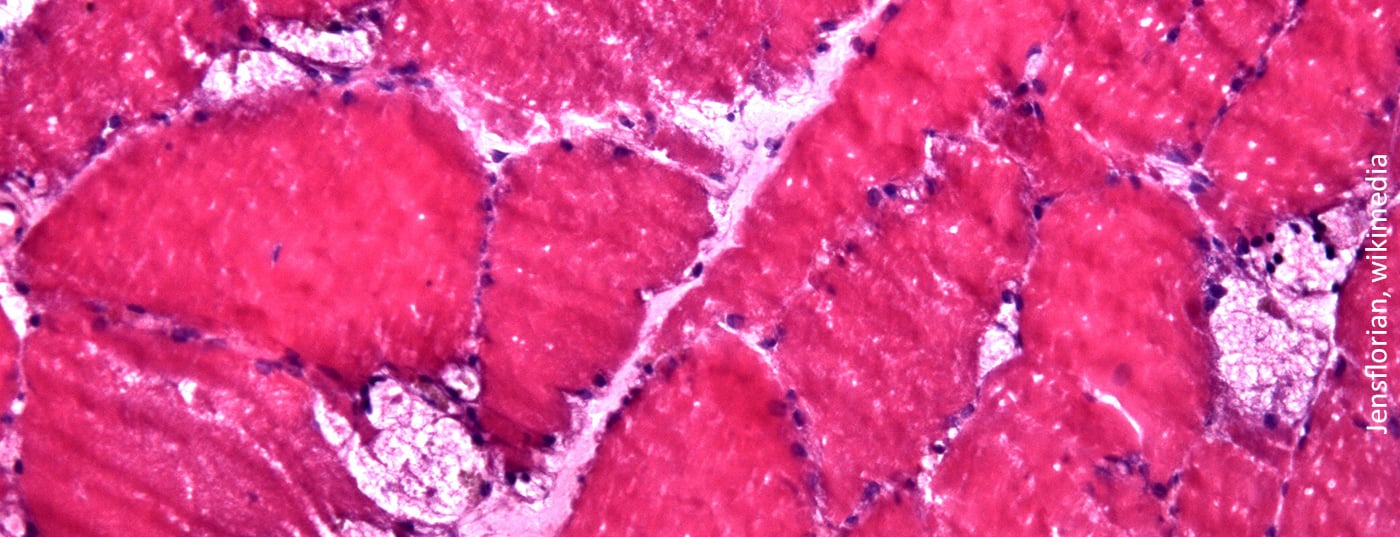New data from the open-label, long-term extension of the randomized, double-blind, Phase 3 COMET study show that people with late-stage Pompe disease (LOPD) maintained improvements in respiratory function and mobility after nearly two years of treatment with avalglucosidase alfa. The analysis was presented at the 18th Annual WORLDSymposium.
Avalglucosidase alfa (AVA; Nexviazyme®) is a further development of enzyme replacement therapy with alglucosidase alfa (AL; Myozyme®), which can slow the progression of Pompe disease. Results from the phase 3 comparative COMET study show that the recombinant enzyme AVA has better quality binding to the mannose-6-phosphate receptor compared to AL, resulting in better uptake in target cells.
Long-term efficacy and safety outcomes were studied in patients who received continuous treatment with AVA (20 mg/kg). In addition, patients were included in the analysis if they were treated with AVA for at least 48 weeks after being switched from previous treatment with AL (20 mg/kg). During the 97 weeks, there was a sustained treatment effect under AVA, as well as stabilization of the treatment effect in patients switched from AL, in terms of respiratory function measured by forced vital capacity (FVC) in the upright position compared with baseline, and mobility measured by the six-minute walk test (6MWT) compared with baseline.
Results of the COMET phase 3 long-term extension study
Treatment with AVA resulted in a 2.65 (1.05) point improvement in percent FVC prognosis compared with baseline in both the primary analysis and the extension phase. Patients treated with AVA only during the extension period showed a 0.36 (1.12) point improvement from baseline. In patients treated with AVA during both the primary analysis and the extension period, walking distance measured with the 6MWT increased by an average of 18.6 (12.01) meters compared with baseline. In patients treated with AVA only during the extension period, mean walking distance increased by 4.56 (12.44) meters from baseline.
The safety profile was comparable between the two treatment arms during treatment with AVA. No new safety signals were observed in patients who switched from AL to AVA during the extension period. In both groups, five subjects discontinued treatment during the extension period because of adverse events such as ocular hyperemia, erythema, urticaria, respiratory distress, acute myocardial infarction, or adenocarcinoma of the pancreas. Six participants experienced serious treatment-related adverse events possibly related to therapy.
Results of the long-term extension of the Phase 2 Mini-COMET study
The results of the extension phase of the Phase 2 mini-COMET study were also presented at the WORLDSymposium. The open-label, increasing-dose, three-cohort study evaluated the safety and efficacy of AVA in patients younger than 18 years with childhood Pompe disease (IOPD) (an application still under investigation in the United States) who previously received AL for six or more months and showed either a suboptimal response or clinical worsening.
Patients were enrolled into one of three cohorts: (1) 20 mg/kg AVA every two weeks (n=6), (2) 40 mg/kg AVA every two weeks (n=5), and (3) randomized to AVA 40 mg/kg every two weeks (n=5) or AL at their stable dose prior to enrollment in the cohort (ranging from 20 mg/kg every two weeks to 40 mg/kg weekly n=6). In addition, all 22 participants participated in an extension phase and received up to 40 mg/kg AVA every two weeks.
The most commonly reported treatment-related adverse events were of mild to moderate severity and included rashes (8 participants), falls, pneumonia, pyrexia (7 participants each), headache, upper respiratory tract infection (6 participants each), and vomiting (5 participants). There were no serious or severe treatment-related adverse events or deaths. At the higher AVA dose (40 mg/kg every two weeks), no increased safety risk was observed in participants who switched from AL to AVA.
At week 97, results showed that AVA-treated patients had stable or improved motor function as measured by the Motor Function Measure (GMFM-88), the Quick Motor Function Test (QMFT) percent total score, and the Pediatric Evaluation of Disability Index (Pompe-PEDI) Functional Skills Scale. In addition, the left ventricle Z-score (LVMZ) was within the normal range in all participants.
Source: “Nexviazyme® (avalglucosidase alfa) shows sustained improvements in respiratory function and mobility in patients with Pompe disease” 02/08/2022, Sanofi.
HAUSARZT PRAXIS 2022; 17(6): 45












